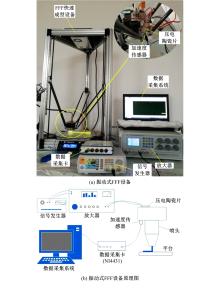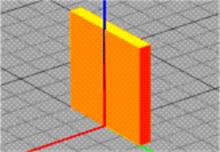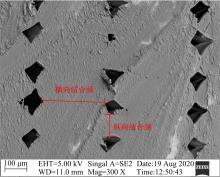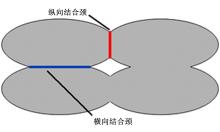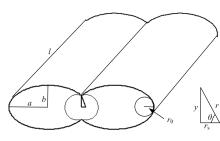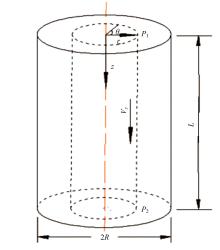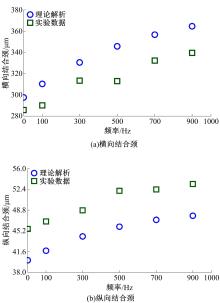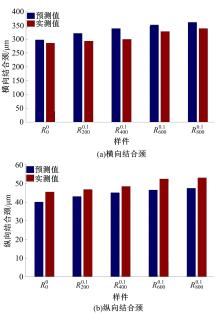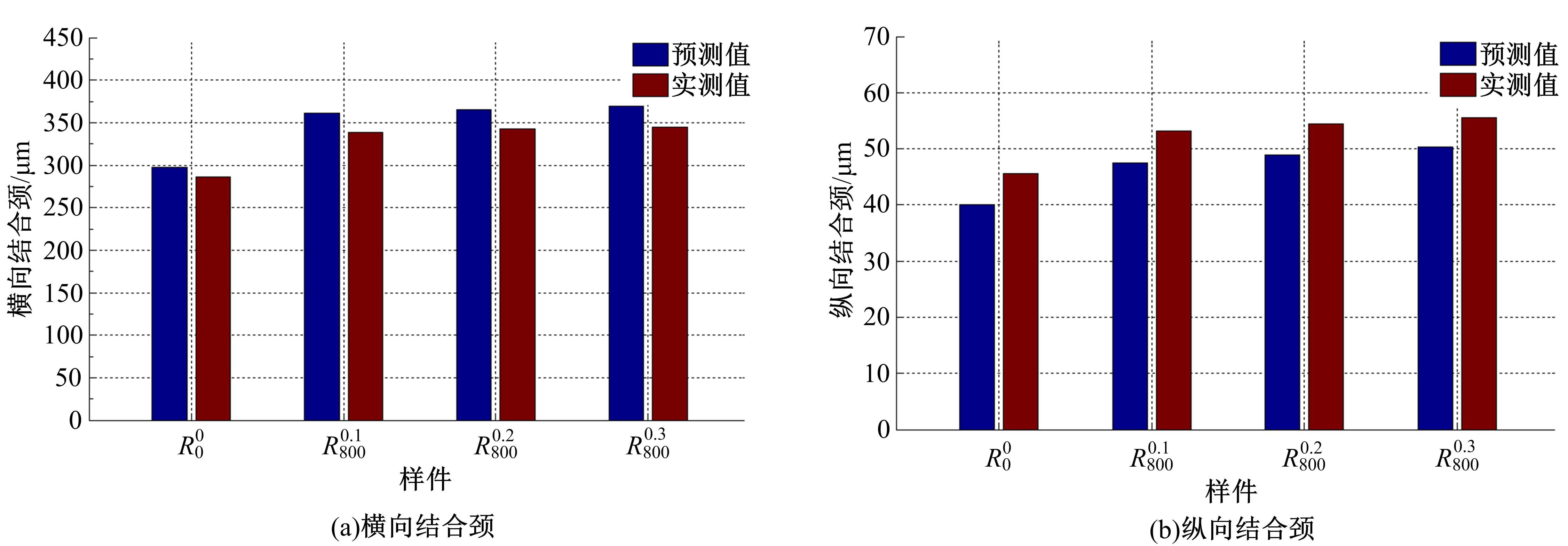Journal of Jilin University(Engineering and Technology Edition) ›› 2023, Vol. 53 ›› Issue (7): 1920-1928.doi: 10.13229/j.cnki.jdxbgxb.20211055
Mechanism analysis on improving bonding neck of fused filament fabrication products by using vibration
Shi-jie JIANG1( ),Pi-feng CHEN1,Ke HU1,Xu-zhen HUANG2,Ming ZHAN3
),Pi-feng CHEN1,Ke HU1,Xu-zhen HUANG2,Ming ZHAN3
- 1.School of Mechanical Engineering and Automation,Northeastern University,Shenyang 110819,China
2.Electrification Department of Technology Center,Beijing Hainachuan Automotive Parts Co. ,Ltd. ,Beijing 100021,China
3.College of Information Science & Engineering,Northeastern University,Shenyang 110819,China
CLC Number:
- TH113.1
| 1 | Vyavahare S, Teraiya S, Panghal D, et al. Fused deposition modelling: a review[J]. Rapid Prototyping Journal, 2020, 26(1): 176-201. |
| 2 | Shahriar B B, France C, Valerie N, et al. Toward improvement of the properties of parts manufactured by FFF (fused filament fabrication) through understanding the influence of temperature and rheological behaviour on the coalescence phenomenon[C]∥ AIP Conference Proceedings, 2017. |
| 3 | Coogan T J, Kazmer D O. Prediction of interlayer strength in material extrusion additive manufacturing[J]. Additive Manufacturing, 2020, 35: 1-17. |
| 4 | Tronvoll S A, Welo T, Elverum C W. The effects of voids on structural properties of fused deposition modelled parts: a probabilistic approach[J]. The International Journal of Advanced Manufacturing Technology, 2018, 97(9): 3607-3618. |
| 5 | Kuznetsov V E, Solonin A N, Tavitov A, et al. Increasing strength of FFF three-dimensional printed parts by influencing on temperature-related parameters of the process[J]. Rapid Prototyping Journal, 2020, 26(1): 107-121. |
| 6 | Vanaei H R, Raissi K, Deligant M, et al. Toward the understanding of temperature effect on bonding strength, dimensions and geometry of 3D-printed parts[J]. Journal of Materials Science, 2020, 55(29): 14677-14689. |
| 7 | Bakrani B S, Chabert F, Nassiet V, et al. Influence of printing parameters on the stability of deposited beads in fused filament fabrication of poly(lactic) acid[J]. Additive Manufacturing, 2019, 25: 112-121. |
| 8 | Vaes D, Coppens M, Goderis B, et al. Assessment of crystallinity development during fused filament fabrication through fast scanning chip calorimetry[J]. Applied Science-basel, 2019, 9(13): 1-20. |
| 9 | He Qing-hao, Ye Lin, Kinloch A J, et al. Characterisation of fusion bonding between filaments of thin 3D printed polyamide 6 using an essential work of fracture method[J]. Journal of Materials Science, 2021, 56(3): 2777-2794. |
| 10 | Papon E A, Haque A. Fracture toughness of additively manufactured carbon fiber reinforced composites-Sciencedirect[J]. Additive Manufacturing, 2019, 26: 41-52. |
| 11 | Ravi A K, Deshpande A, Hsu K H. An in-process laser localized pre-deposition heating approach to inter-layer bond strengthening in extrusion based polymer additive manufacturing[J]. Journal of Manufacturing Processes, 2016, 24: 179-185. |
| 12 | Abbott A C, Tandon G P, Bradford R L, et al. Process-structure-property effects on abs bond strength in fused filament fabrication[J]. Additive Manufacturing, 2018, 19: 29-38. |
| 13 | Yin Jun, Lu Chao-hua, Fu Jian-zhoug, et al. Interfacial bonding during multi-material fused deposition modeling (FDM) process due to inter-molecular diffusion[J]. Materials & Design, 2018, 150: 104-112. |
| 14 | Jiang S J, Siyajeu Y, Shi Y F, et al. Improving the forming quality of fused filament fabrication parts by applied vibration[J]. Rapid Prototyping Journal, 2020, 26(1): 202-212. |
| 15 | Farah S, Anderson D G, Langer R. Physical and mechanical properties of PLA, and their functions in widespread applications―a comprehensive review[J]. Advanced Drug Delivery Reviews, 2016, 107: 367-392. |
| 16 | Pokluda O, Bellehumeur C T, Vlachopoulos J. Modification of frenkel's model for sintering[J]. Aiche Journal, 1997, 43(12): 3253-3256. |
| 17 | Frenkel. Viscous flow of crystalline bodies under the action of surface tension[J]. 1945, 9(5): 501-559. |
| 18 | Jiang Shi-jie, Chen Pi-feng, Zhan Yang, et al. Theoretical and computational analysis on the melt flow behavior of polylactic acid in material extrusion additive manufacturing under vibration field[J]. Applied Science, 2020, 10(11): 1-19. |
| 19 | Sun Q, Rizvi G M, Bellehumeur C T, et al. Effect of processing conditions on the bonding quality of FDM polymer filaments[J]. Rapid Prototyping Journal, 2008, 14(2): 72-80. |
| [1] | Yan YANG,Yu-qing SHI,Xiao-rong ZHANG,Guan-wei LUO. Dynamic stability analysis of a amplitude⁃limited vibration system with multiple rigid constraints [J]. Journal of Jilin University(Engineering and Technology Edition), 2023, 53(2): 364-375. |
| [2] | Zhi-qiang HAN,Gang XIE,Yong-jun ZHOU,Shi-zhong LIU,Min-jie JIN. Numerical analysis method of vehicle⁃bridge coupling vibration of curved bridge [J]. Journal of Jilin University(Engineering and Technology Edition), 2023, 53(2): 515-522. |
| [3] | Zhen SONG,Jie LIU. Time series prediction algorithm of vibration frequency of rotating machinery [J]. Journal of Jilin University(Engineering and Technology Edition), 2022, 52(8): 1764-1769. |
| [4] | Jie LI,Tao CHEN,Wen-cui GUO,Qi ZHAO. Pseudo excitation method of vehicle non-stationary random vibration in space domain and its application [J]. Journal of Jilin University(Engineering and Technology Edition), 2022, 52(4): 738-744. |
| [5] | Wen-ying GAO,Jing LIN,Bao-fa LI,Wei WANG,Shi-yan GU. Vibration characteristics analysis and structural optimization of straw deep bury and returning machine [J]. Journal of Jilin University(Engineering and Technology Edition), 2022, 52(4): 970-980. |
| [6] | Yan-ling ZHANG,Can WANG,Xu ZHANG,Ang-yang WANG,Yun-sheng LI. Human⁃induced vibration analysis and pedestrian comfort evaluation for suspension footbridge with different hunger systems [J]. Journal of Jilin University(Engineering and Technology Edition), 2022, 52(11): 2644-2652. |
| [7] | Jian YANG,Qi XIA,Hai-chao ZHOU,Guo-lin WANG. Noise reduction mechanism of truck radial tire based on modified carcass string contour design [J]. Journal of Jilin University(Engineering and Technology Edition), 2021, 51(4): 1198-1203. |
| [8] | Wei LI,Huai-liang ZHANG,Wei QU. Design method of hydraulic straight pipe under random vibration [J]. Journal of Jilin University(Engineering and Technology Edition), 2021, 51(4): 1222-1229. |
| [9] | Hai-bin WEI,Xiang-yan WANG,Fu-yu WANG,Yong ZHANG. Mechanical properties and micro analysis of AC-25 asphalt mixture based on vibration forming [J]. Journal of Jilin University(Engineering and Technology Edition), 2021, 51(4): 1269-1276. |
| [10] | Ping YU,Te MU,Li-hui ZHU,Zi-ye ZHOU,Jie SONG. Nonlinear dynamic analysis and stability control of drilling tool conveying mechanism [J]. Journal of Jilin University(Engineering and Technology Edition), 2021, 51(3): 820-830. |
| [11] | Qing-wen KONG,Guo-jin TAN,Long-lin WANG,Yong WANG,Zhi-gang WEI,Han-bing LIU. Analysis of free vibration characteristics of cracked box girder bridge based on finite element method [J]. Journal of Jilin University(Engineering and Technology Edition), 2021, 51(1): 225-232. |
| [12] | Fang-wu MA,Li HAN,Liang WU,Jin-hang LI,Long-fan YANG. Damping optimization of heavy⁃loaded anti⁃vibration platform based on genetic algorithm and particle swarm algorithm [J]. Journal of Jilin University(Engineering and Technology Edition), 2020, 50(5): 1608-1616. |
| [13] | Zhao LIU,Jiang-lin CHENG,Yu-tian ZHU,Li-hui ZHENG. Vertical vibration modeling and motion correlation analysis of rail vehicles [J]. Journal of Jilin University(Engineering and Technology Edition), 2020, 50(5): 1600-1607. |
| [14] | Yun-long ZHANG,Yang-yang GUO,Jing WANG,Dong LIANG. Natural frequency and mode of vibration of steel⁃concrete composite beam [J]. Journal of Jilin University(Engineering and Technology Edition), 2020, 50(2): 581-588. |
| [15] | Fu-chun JIA,Xian-jie MENG,Yu-long LEI. Optimal design of two degrees of freedom dynamic vibration absorber based on multi-objective genetic algorithm [J]. Journal of Jilin University(Engineering and Technology Edition), 2019, 49(6): 1969-1976. |
|
||
